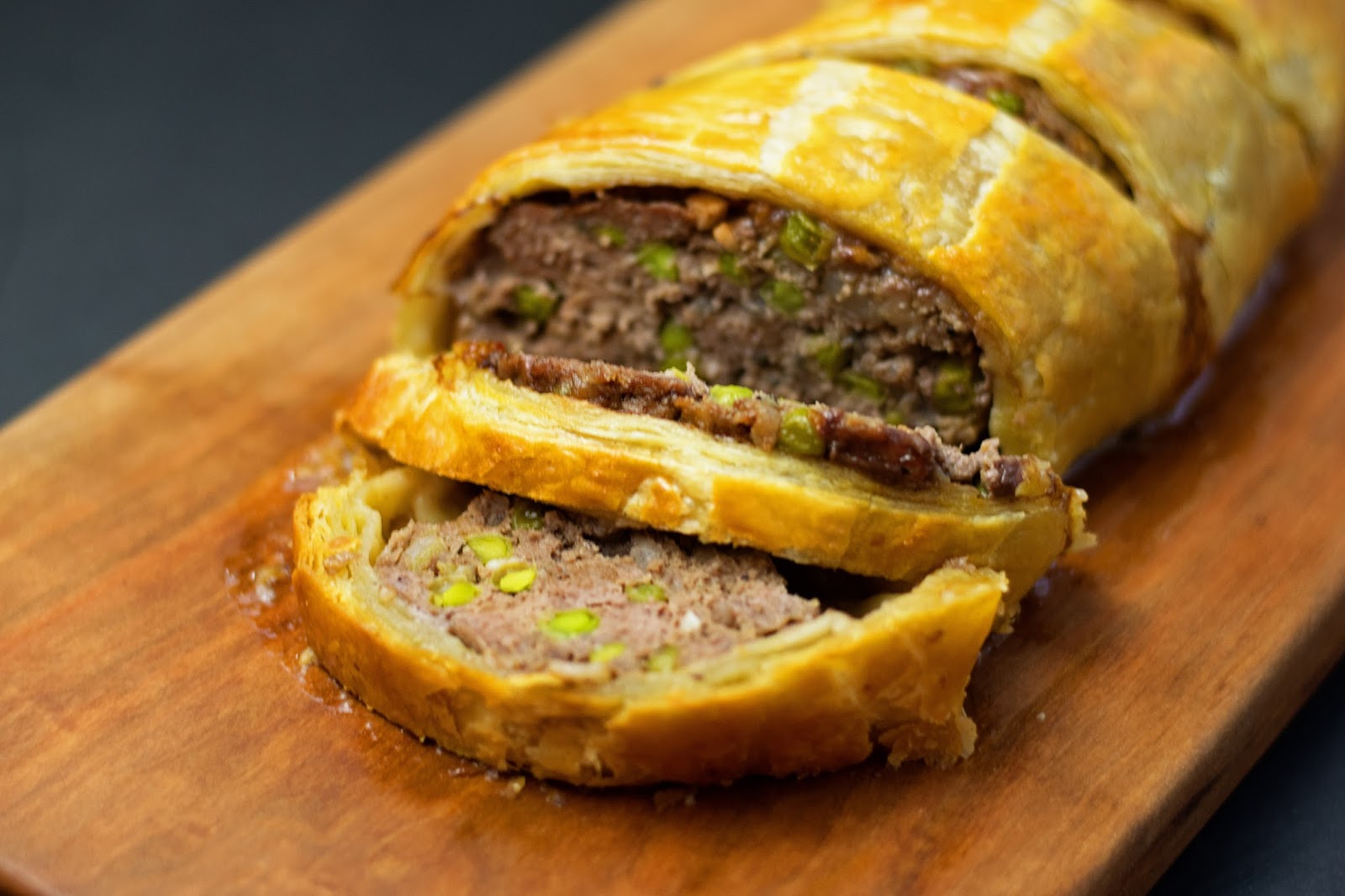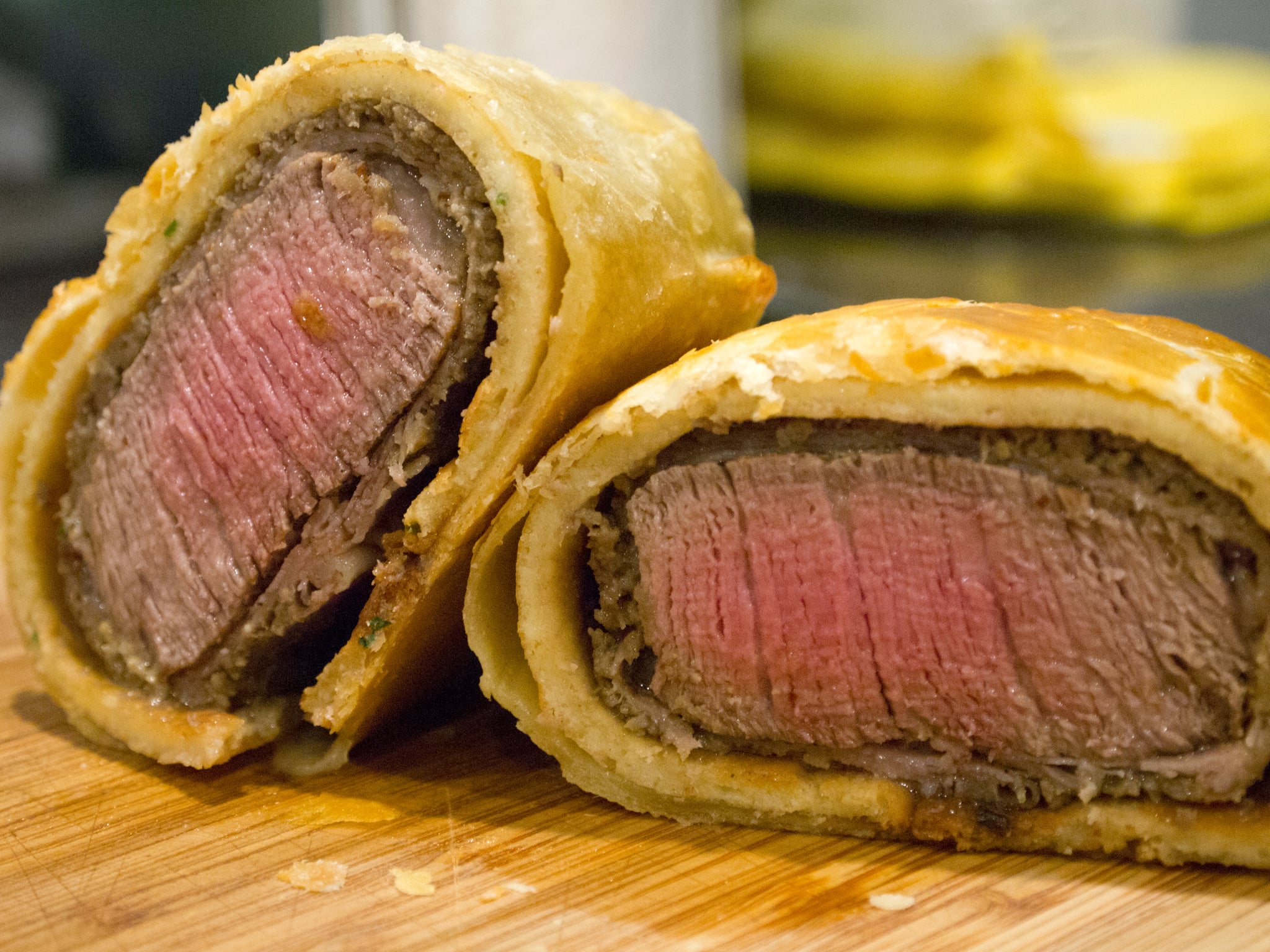Embark on a culinary adventure as we delve into the delectable world of Wellington. This iconic dish, steeped in history and culinary prowess, has captured the hearts and palates of gastronomes worldwide. Join us as we explore the origins, preparation, and tantalizing variations of this culinary masterpiece, unraveling its secrets and inspiring your next culinary creation.
From its humble beginnings to its modern-day iterations, Wellington has evolved into a symphony of flavors and textures. Whether you’re a seasoned chef or an aspiring home cook, this guide will equip you with the knowledge and techniques to craft a Wellington that will impress even the most discerning palate.
Wellington Dish Overview
Beef Wellington, a culinary masterpiece, traces its roots to the 19th century. The dish is named after Arthur Wellesley, the 1st Duke of Wellington, who defeated Napoleon at the Battle of Waterloo in 1815. The original Wellington was a beef fillet wrapped in pâté de foie gras, coated with duxelles, and encased in puff pastry.
Over time, the recipe has evolved, with variations found worldwide.
Traditional Ingredients
The traditional ingredients of Beef Wellington include:
- Beef fillet: A tender and flavorful cut of beef, typically from the tenderloin or short loin.
- Pâté de foie gras: A rich and luxurious spread made from the liver of a duck or goose.
- Duxelles: A finely chopped mixture of mushrooms, onions, and herbs.
- Puff pastry: A light and flaky pastry that encases the Wellington.
Variations
While the traditional Beef Wellington remains a classic, many variations have emerged over time:
- Chicken Wellington: Chicken breast replaces beef fillet, creating a lighter and more delicate dish.
- Vegetarian Wellington: Mushrooms, vegetables, or tofu replace the beef fillet, offering a plant-based alternative.
- Seafood Wellington: Salmon, lobster, or scallops are used instead of beef, resulting in a seafood-inspired Wellington.
Wellington Preparation Methods

Wellington preparation involves meticulous steps and techniques to create a delectable dish. From sourcing the finest ingredients to executing precise cooking methods, each aspect contributes to the overall success of this culinary masterpiece.
Ingredients Preparation
The key to an exceptional Wellington lies in the quality of its ingredients. The beef tenderloin, the heart of the dish, should be of the highest grade, trimmed of any excess fat or sinew. The mushrooms, typically a combination of wild and cultivated varieties, are finely chopped and sautéed to concentrate their umami-rich flavors.
Assembling the Wellington
The assembly process requires precision and attention to detail. The seasoned beef tenderloin is first wrapped in a layer of pâté, then in a layer of prosciutto. This double-wrapped core is then coated in a layer of duxelles, the sautéed mushroom mixture.
The entire assembly is then wrapped in puff pastry, ensuring a golden-brown crust during baking.
Cooking Techniques
Wellington cooking involves a combination of searing and baking. The initial searing on a hot pan creates a flavorful crust that locks in the juices of the beef. The subsequent baking in a preheated oven allows the pastry to rise and brown, while the internal temperature of the beef reaches the desired doneness.
Tips and Tricks
To perfect the Wellington experience, consider these tips:
- Use a meat thermometer to ensure the beef reaches the desired internal temperature.
- Allow the Wellington to rest for 10-15 minutes before slicing to allow the juices to redistribute.
- Serve with a classic red wine sauce to enhance the flavors.
Wellington Ingredient Analysis

Wellington is a dish with a rich nutritional profile. It is a good source of protein, carbohydrates, and healthy fats. The meat provides essential amino acids, while the pastry provides energy. The vegetables add vitamins, minerals, and fiber.Each ingredient in Wellington plays a specific role.
The meat is the main source of protein and flavor. The pastry encloses the meat and helps to keep it moist. The vegetables add moisture, flavor, and texture. The herbs and spices add flavor and complexity.There are several alternatives for common Wellington ingredients.
For example, you can use ground beef or pork instead of beef tenderloin. You can use puff pastry or shortcrust pastry instead of filo pastry. You can use any type of vegetables you like, such as carrots, celery, onions, or mushrooms.
Wellington Presentation and Accompaniments
Traditionally, Wellington is presented as an elegant dish, wrapped in golden brown pastry and adorned with intricate latticework or simple slits. The dish is typically served whole, allowing guests to admire its craftsmanship before slicing into the tender meat and flaky pastry.For
a more creative presentation, consider slicing the Wellington into individual portions and arranging them on a platter with a drizzle of jus or sauce. You can also garnish the dish with fresh herbs, such as thyme or rosemary, or sprinkle with a dusting of grated Parmesan cheese.Wellington
pairs well with a variety of accompaniments, such as:
Roasted vegetables
Roasted carrots, parsnips, or Brussels sprouts provide a colorful and flavorful contrast to the richness of the Wellington.
Mashed potatoes
Creamy and smooth mashed potatoes offer a comforting and indulgent accompaniment to the dish.
Green salad
A light and refreshing green salad helps balance the richness of the Wellington and adds a touch of freshness.
Red wine sauce
A rich and flavorful red wine sauce complements the meaty flavors of the Wellington and adds a touch of sophistication.
Wellington Variations and Innovations
Wellington, a classic dish, has undergone various regional adaptations and modern interpretations. These variations showcase the dish’s versatility and adaptability.
Regional Variations
* Beef Wellington Wellington : The classic dish using beef tenderloin wrapped in pâté and pastry.
Pork Wellington
A variation using pork tenderloin, often seasoned with sage and apples.
Venison Wellington
A hearty variation using venison tenderloin, complemented by wild mushrooms and red wine.
Salmon Wellington
A seafood twist using salmon fillet wrapped in spinach and pastry.
Modern Interpretations
* Molecular Wellington : A modern take using sous vide techniques and spherified components.
Wellington Bites
Miniaturized versions of Wellington, perfect for appetizers or canapés.
Vegan Wellington
A plant-based version using mushroom pâté and vegan pastry.These variations have expanded the appeal of Wellington, introducing new flavors and textures while preserving its essence.
Wellington in Popular Culture
Wellington has made its mark in various cultural spheres, including literature, film, and art. In literature, Wellington has been immortalized in classic works like “The Count of Monte Cristo” by Alexandre Dumas, where it is depicted as a dish of exceptional extravagance.In
the realm of film, Wellington has graced the silver screen in notable productions such as “The Great Gatsby” (1974) and “Chef” (2014), showcasing its culinary appeal and symbolic significance. In art, Wellington has been portrayed in paintings and sculptures, capturing its aesthetic allure and culinary prowess.
Cultural Significance and Symbolism
Wellington holds deep cultural significance, often associated with opulence, refinement, and special occasions. Its intricate preparation and exquisite presentation make it a symbol of culinary mastery and sophistication. Wellington has also become synonymous with celebration and indulgence, gracing the tables of grand banquets and festive gatherings.
Anecdotes and Stories
Anecdotes surrounding Wellington abound, adding to its cultural lore. One notable tale recounts a dinner hosted by the Duke of Wellington himself, where the dish was served to honor his victory at the Battle of Waterloo. The culinary masterpiece reportedly left a lasting impression on the guests, further cementing its status as a dish of distinction.
Summary
As we conclude our exploration of Wellington, let us remember that this culinary masterpiece is not merely a dish but an expression of creativity and culinary excellence. Its versatility and adaptability have ensured its enduring legacy, inspiring countless variations and interpretations.
Embrace the spirit of innovation and experimentation, and let your own culinary journey with Wellington be a testament to the boundless possibilities of this timeless dish.
Q&A
What is the origin of Wellington?
Wellington traces its roots to the 19th century, named after the Duke of Wellington, a renowned military commander who defeated Napoleon at the Battle of Waterloo.
What are the key ingredients in a traditional Wellington?
A classic Wellington features a tenderloin wrapped in pâté, prosciutto, and puff pastry, baked to perfection.
How do I ensure a perfectly cooked Wellington?
Use a meat thermometer to monitor the internal temperature of the tenderloin, aiming for your desired doneness. Allow the Wellington to rest before slicing to prevent the juices from escaping.
What are some creative presentation ideas for Wellington?
Consider carving the Wellington into individual portions, arranging them on a bed of sautéed vegetables or a rich sauce. Garnish with fresh herbs or edible flowers for a visually stunning presentation.
Can I substitute ingredients in a Wellington recipe?
Yes, you can experiment with different ingredients based on your preferences or dietary restrictions. For example, you could use a different type of meat, such as lamb or chicken, or replace the pâté with a mushroom duxelles.
